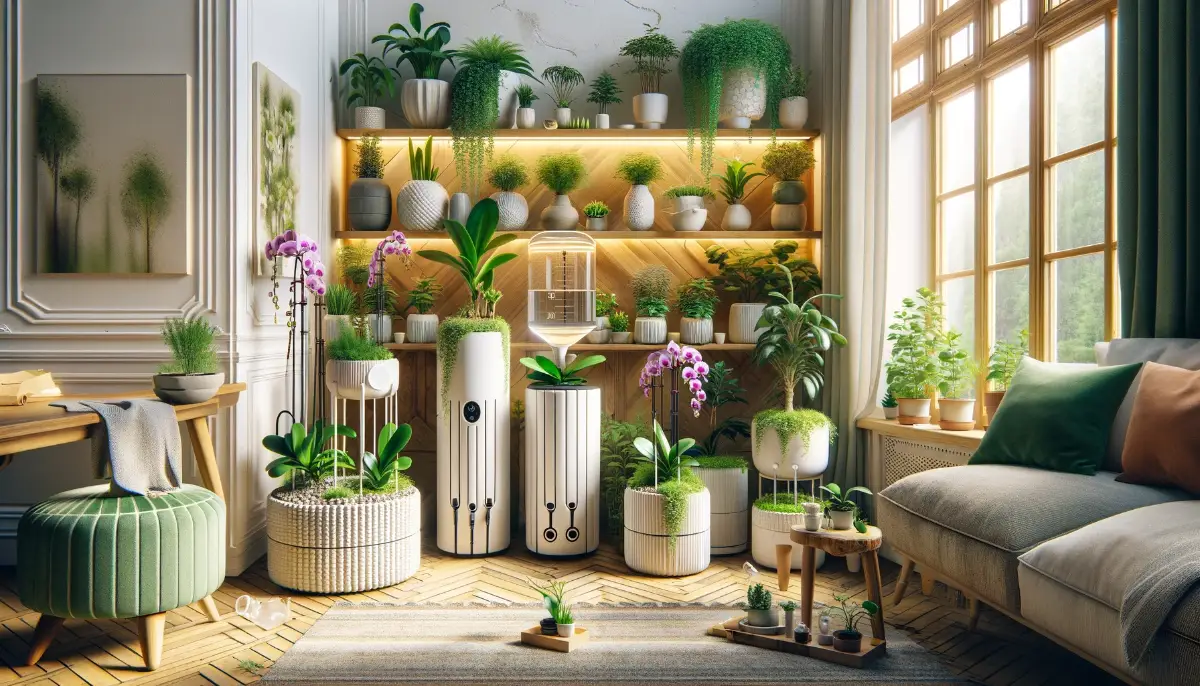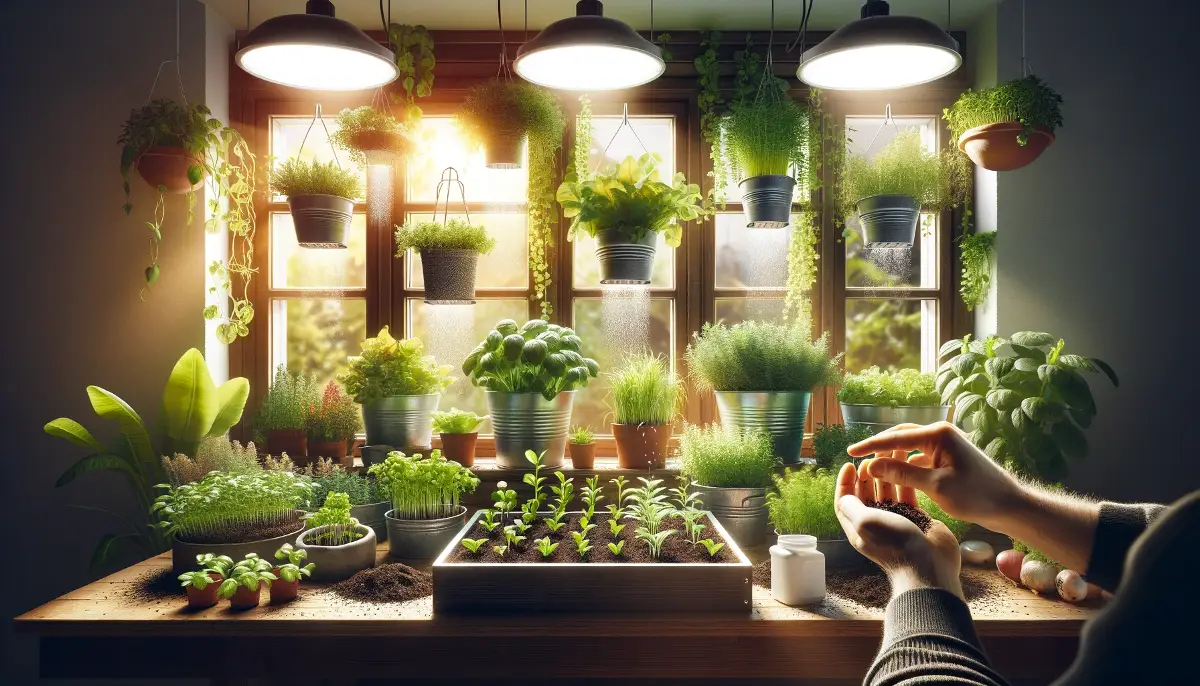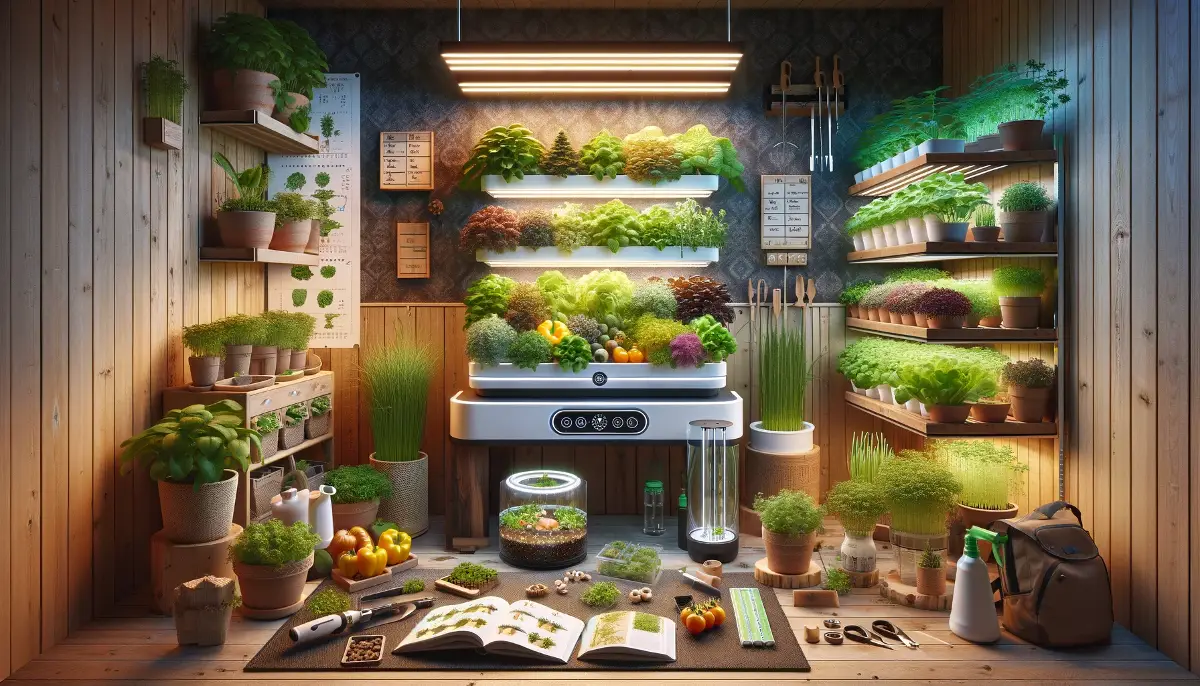The magic of nurturing indoor plants lies not just in their aesthetic appeal but in the tranquility they bring into our homes. Yet, amidst our bustling lives, ensuring each pot receives its share of attention and water can be a challenge.
Enter the self watering indoor system, a game-changer for plant enthusiasts and novices alike, promising to keep your green friends thriving with minimal fuss.
- Self-watering systems can significantly reduce the time and effort required for plant care.
- Various types are available to suit different needs, from simple DIY solutions to sophisticated setups.
- Understanding the specific watering needs of your plants is crucial for choosing the right system.
Types of Self-Watering Systems for Indoor Plants
Drip Irrigation Systems: A boon for the forgetful gardener, these systems deliver water directly to the soil at a steady pace, ensuring plants receive moisture without wastage. Though they might require an initial setup effort, the payoff in water efficiency and plant health is worth it.
Capillary Mat Systems: Ideal for those seeking simplicity, these mats draw water up to the plant roots as needed. They’re perfect for small indoor gardens and can keep your plants happy without constant monitoring.
Self-Watering Pots: For those who prefer an all-in-one solution, self-watering pots are the way to go. Designs vary, from stylish options like the Eva Solo Orchid Pot, designed specifically for orchids, to the Aquaphoric Herb Garden Tub, perfect for culinary enthusiasts eager to grow their herbs.
DIY Self-Watering Systems: Creative and Cost-Effective Solutions
Bottle Hack for Small Gardens: With just a plastic bottle and some basic materials, you can create a system that keeps your plants hydrated for days. It’s a simple yet effective solution for small spaces.
Houseplant Bath Method: Before leaving for a vacation, give your plants a thorough soak in a bathtub or sink. This method is especially beneficial for tropical plants that thrive in moist conditions.
Plastic Bag Wick System: Using a resealable plastic bag and a thread, this ingenious method ensures your plants receive a steady supply of water. It’s an excellent project for those who love a bit of DIY ingenuity.
Wicking Cord Method: Utilizing materials like nylon Venetian blind cord or acrylic yarn, this system draws water from a reservoir to the plants, ensuring they stay hydrated without the risk of overwatering.
Implementing and Optimizing Your Self-Watering System
Choosing the right self watering system for your indoor garden hinges on understanding your plants‘ needs and your lifestyle. Whether you’re a busy professional, a frequent traveler, or simply seeking to enhance your green thumb, there’s a self-watering solution out there for you.
Choosing the Right System for Your Needs
The perfect self-watering system marries your plants’ requirements with your personal preferences and practical considerations. Think about the size of your indoor garden, the types of plants you’re nurturing, and how much time you can dedicate to their care.
For instance, drip irrigation might be overkill for a handful of succulents, whereas a simple wicking system could be just right.
Installation and Maintenance Tips
Installation: The setup process varies significantly between systems. For DIY options like the bottle hack or wick system, you’ll need basic materials and a bit of creativity. More sophisticated setups like drip irrigation may require an initial investment of time and effort to install but pay dividends in the long run through water efficiency and plant health.
Maintenance: Keeping your self-watering system in top shape involves regular checks and cleaning. Ensure reservoirs are filled, batteries (if any) are charged, and no blockages could impede water flow.
Remember, the goal is to mimic natural water uptake, so adjustments may be needed as your plants grow and their needs change.
Embracing a self watering indoor system can transform your plant care routine, ensuring your verdant friends thrive with minimal intervention. Whether you opt for a DIY solution or a high-tech setup, the peace of mind knowing your plants are well-hydrated is invaluable.
Dive in, experiment, and watch your indoor garden flourish.
FAQs on Self-Watering Indoor Systems
What are self-watering indoor systems?
Self-watering indoor systems are mechanisms designed to provide consistent moisture to plants automatically. They come in various forms, including drip irrigation systems, capillary mat systems, self-watering pots, and DIY solutions, each catering to different plant needs and gardener preferences.
How do self-watering systems work?
Self-watering systems work by allowing water to be absorbed by the plant’s roots as needed. They can use reservoirs, wicking materials, or drip systems to ensure that the soil remains evenly moist without manual watering every day.
This process mimics natural water uptake, promoting healthier plant growth.
Can self-watering systems overwater plants?
While self-watering systems are designed to reduce the risk of overwatering, improper setup or calibration can lead to excessive moisture. It’s important to choose a system appropriate for your plant’s specific watering needs and to monitor the soil’s moisture level regularly, especially during the initial setup phase.
Are self-watering systems suitable for all types of plants?
Most plants can benefit from self-watering systems, especially those that require consistent soil moisture. However, some plants that prefer drier conditions or are susceptible to root rot may not thrive with continuous water availability.
Research your plant’s specific needs or consult with a gardening expert to ensure compatibility.
How often should I refill the water reservoir in a self-watering system?
The frequency of refilling the water reservoir depends on the system’s design, the size of the reservoir, the type and number of plants being watered, and environmental conditions such as temperature and humidity. Some systems may require weekly refills, while others can last several weeks without needing a refill.
Regularly check the water level and refill as necessary to maintain optimal plant health.
Can I use fertilizers with self-watering systems?
Yes, you can use fertilizers with self-watering systems, but it’s important to follow the fertilizer’s instructions and adjust the frequency and concentration appropriately. Some self-watering pots and systems have specific compartments or methods for adding fertilizers. Liquid fertilizers are often preferred for easy integration into the watering system.
Is it expensive to set up a self-watering system for indoor plants?
The cost of setting up a self-watering system can vary widely depending on the type and complexity of the system. DIY solutions can be very cost-effective, using materials you may already have at home. Commercially available self-watering pots and systems range in price, offering options for every budget. Investing in a more sophisticated system may have a higher initial cost but can save time and resources in the long run.









